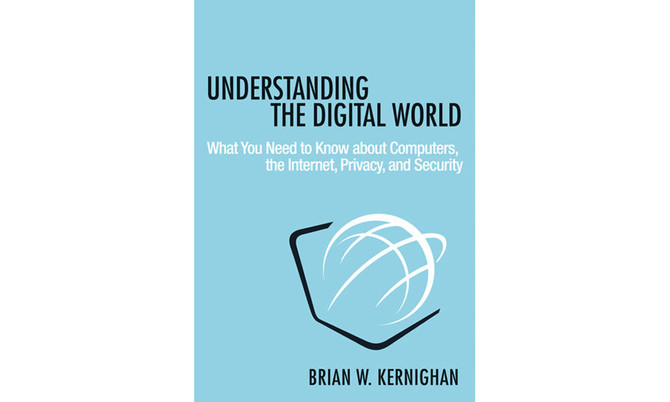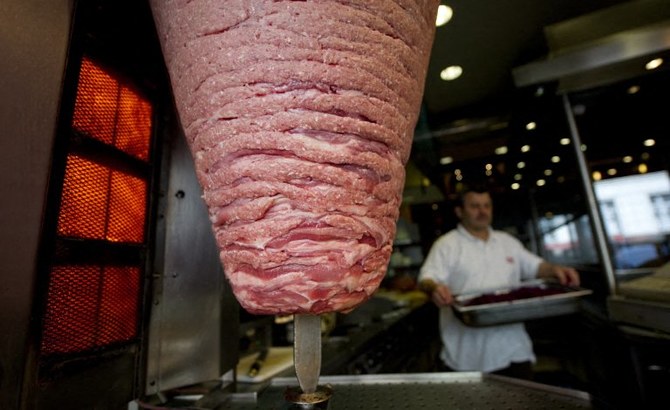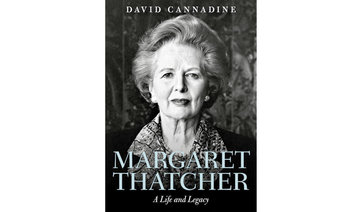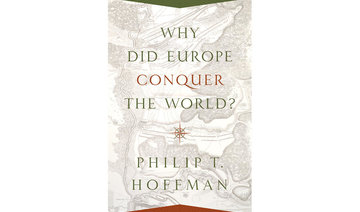Always on. Always connected. Computers nowadays are everywhere. They are changing our way of life.
Today we can access our bank account on our phone but do you know how risky it is to do your personal banking in a coffee shop or at an airport? An increasing number of devices — not only mobile phones but also cars, security cameras, home appliances are connected to the Internet. Therefore, we cannot ignore the dangers of the world’s ever growing reliance on computer networks: online privacy, loss of control over personal data and the omnipresent threat of cybercrime and cyber terrorism.
“Understanding the Digital World” takes us inside this new world. This book is not meant for engineers, physicists or mathematicians, it is addressed to the general public. It tackles questions we all ask ourselves but never had the answers. Who knows whether iPhones and Android phones are totally different or similar? And are we sure our emails are really safe?
Brian Kernighan has a friendly approach and the knack to express himself in an extraordinarily clear fashion. This book familiarizes us with the basic ideas of digital systems, which will not change “so if you understand those, you’ll understand tomorrow’s systems too, and you’ll be in a better position to deal with the challenges and the opportunities that they present” wrote Kernighan.
Today’s computers are very similar to those made in the 1950s in the sense that “how it does what it does” is still the same. What has changed is the way a computer is built and how fast it runs. Personal computers are now much smaller, cheaper, faster and more reliable. Is there a difference between a Mac and a PC? PCs are cheaper than Macs but according to Kernighan, people choose Macs because they equate them with reliability, quality, aesthetics, and an excellent customer service for which consumers are willing to pay more.
The same issue concerns mobile phones. IPhones are more expensive than Android phones but does that make them better? Some customers prefer the iPhone because it is functional and aesthetic. The truth is that the hardware responsible for the computing in an iPhone and in an Android is very similar. In fact the functional properties of today’s digital computers and our phones are the same, “they all can compute exactly the same things,” wrote Kernighan.
Every computer, whatever the brand, consists of a processor (the CPU), some primary memory (RAM), some secondary storage (a disk) and other components connected by wires known as a bus.
The CPU is the brain. It does arithmetic operations, moves data around, and controls the operation of other components. The primary memory or random access memory (RAM) stores not only the data that the CPU is working on but also the instructions that tell the CPU what to do with the data. If you want your computer to run faster, the best thing you can do is buy extra RAM.
One can say that a computer is a general-purpose machine. It takes its instructions from memory but one can modify the computation it performs by introducing different instructions in the memory.
One fundamental notion is related to how computers represent information, or in other words, how computers are digital processors. First, it is necessary to know the difference between analog and digital. An analog watch has an hour hand, a minute hand and a second hand whereas a digital watch and a mobile phone show time with digits. An analog thermometer comes with a column of red liquid, which reacts to small changes of temperature whereas a digital thermometer flashes a number. It shows 37 for all temperatures between 36.5 and 37.5.
Although we are in a world, which is analog, the modern technology we use is digital. Instead of storing words, pictures and sounds in the form of plastic films or magnetic tapes, we first convert the information into numbers (digits) and display or store the numbers instead.
“Digital data is easy for computers to work with. It can be stored, transported and processed in many ways. Digital information can be compressed by squeezing out redundant or unimportant information. It can be encrypted for security and privacy…it can be shipped anywhere via the Internet…” wrote Kernighan. This cannot be achieved with analog information but on the other hand, analog systems, like clay tablets, papyrus, paper and photographic films, have withstood the test of time. The future will tell whether digital systems will last.
In a digital camera, the lens projects the image onto a rectangular surface covered with tiny light-sensitive detectors that are placed behind red, green and blue filters. Each detector stores an amount of electric charge proportional to the amount of light received. These charges are converted into numeric values. Therefore a digital image shows a pattern of numbers that represent the different intensities of light.
Mobile phones have completely revolutionized our way of life. This wireless communication technology barely known in the 1980s is now used by more than half of the world’s population. Smartphones are now used for Internet access so we can send mails, browse, shop and do some social networking. Smartphones are now replacing watches, cameras and they provide games, music and films.
Digital technology has provided numerous benefits but it has had a negative impact on our personal privacy and security “and this is getting worse” believes Kernighan. The Internet has had a significant impact on our security because our lives have become an easy prey for electronic intruders. The truth is that practically everything you do with a computer, a phone or a credit card generates data about you that is systematically collected, analyzed, saved forever and often sold to organizations that you have never heard of.
We should think seriously when we go online. Before sending a mail or posting or tweeting, pause a moment and ask whether you would be comfortable if your words or pictures appeared on the front page of the New York Times or as the lead story on a TV news program. Your mail, texts and tweets are likely to be stored forever and could potentially reappear in some embarrassing context years later.
Cryptography, the art of “secret writing,” is our best defense to preserve personal information. Incidentally, Apple encrypts all the contents of iPhones running iOS 9, using a key provided by the user. In 2016, the FBI attempted to force Apple to break the encryption on an iPhone that had been used by the terrorists who killed 14 people in San Bernardino, California, before being killed. The FBI requested access to the content of one of the phones. Apple claimed that if it created a special mechanism to access the information it would set a precedent that would seriously weaken all phone security.
“My personal position is that strong encryption is one of the few defenses that ordinary people have against government over-reaching and criminal invasion, and we must not give it up,” writes Kernighan.
The author shares his enthusiasm for an amazing technology. One can only be excited by the huge promise of the Internet and technology to deliver better education, health care, transport and commercial opportunities. Technological change is an ongoing process.
“It’s going to be fun to see how things evolve over the next few years. I hope that this book will help you anticipate, cope with, and positively influence some of the inevitable changes,” concludes Kernighan. In a very near future, we can expect to see sophisticated devices becoming incorporated into our bodies. Bionics is no longer science fiction! We could one day all have chips in our brains.
Book Review: The only thing between you and Big Brother on the Internet is encryption
Book Review: The only thing between you and Big Brother on the Internet is encryption

Meaty issue: German political party calls for €4.90 price cap on doner kebabs

- Die Linke appeals to government as price of national favorite hits €10 in some cities
- Scheme would cost taxpayer about €4bn
LONDON: German political party Die Linke has urged the government to cap the price of a much loved food item — the doner kebab.
The party has proposed providing daily vouchers to households that would limit prices to €4.90 ($5.28) and €2.90 for young people under an initiative known as Donerpreisbremse.
The scheme is projected to cost the government about €4 billion.
Introduced after the Second World War by Turkish immigrants who adapted the dish to suit local tastes, the doner kebab is a national favorite in Germany, with an estimated 1.3 billion consumed annually. But their soaring price has become a hot-button political issue.
Die Linke said the cost of a doner kebab had reached €10 in some cities, from €4 just two years ago.
“For young people right now it is an issue as important as where they will move when they leave home,” said Hanna Steinmuller, a lawmaker with the Greens party.
“I know it’s not an everyday issue for many people here … but I think as voter representatives we are obliged to highlight these different perspectives.”
German Chancellor Olaf Scholz was famously confronted by a voter last year who demanded he “speak with Putin … I’m paying €8 for a doner.”
With public pressure mounting, Scholz recently acknowledged on social media that “everywhere I go, mostly by young people, I get asked if there should be a price cap for doner kebabs.”
Despite the appeals, the chancellor rejected the proposal, citing the impracticality of price controls in a free market economy.
Despite its humble origins as a street food, the doner kebab has become an unexpected point of political focus.
Last month, German President Frank-Walter Steinmeier sparked controversy when on a visit to Turkiye he gifted 60 kg of kebab meat from Berlin to Istanbul in what some called a clumsy attempt to symbolize the strong cultural ties between the two nations.
A 98-year-old in Ukraine walked miles to safety from Russians, with slippers and a cane

- Describing her journey, the nonagenarian said she had fallen twice and was forced to stop to rest at some points, even sleeping along the way before waking up and continuing her journey
KYIV, Ukraine: A 98-year-old woman in Ukraine who escaped Russian-occupied territory by walking almost 10 kilometers (6 miles) alone, wearing a pair of slippers and supported by a cane has been reunited with her family days after they were separated while fleeing to safety.
Lidia Stepanivna Lomikovska and her family decided to leave the frontline town of Ocheretyne, in the eastern Donetsk region, last week after Russian troops entered it and fighting intensified.
Russians have been advancing in the area, pounding Kyiv’s depleted, ammunition-deprived forces with artillery, drones and bombs.
“I woke up surrounded by shooting all around — so scary,” Lomikovska said in a video interview posted by the National Police of Donetsk region.
In the chaos of the departure, Lomikovska became separated from her son and two daughters-in-law, including one, Olha Lomikovska, injured by shrapnel days earlier. The younger family members took to back routes, but Lydia wanted to stay on the main road.
With a cane in one hand and steadying herself using a splintered piece of wood in the other, the pensioner walked all day without food and water to reach Ukrainian lines.
Describing her journey, the nonagenarian said she had fallen twice and was forced to stop to rest at some points, even sleeping along the way before waking up and continuing her journey.
“Once I lost balance and fell into weeds. I fell asleep … a little, and continued walking. And then, for the second time, again, I fell. But then I got up and thought to myself: “I need to keep walking, bit by bit,’” Lomikovska said.
Pavlo Diachenko, acting spokesman for the National Police of Ukraine in the Donetsk region, said Lomikovska was saved when Ukrainian soldiers spotted her walking along the road in the evening. They handed her over to the “White Angels,” a police group that evacuates citizens living on the front line, who then took her to a shelter for evacuees and contacted her relatives.
“I survived that war,’ she said referring to World War II. “I had to go through this war too, and in the end, I am left with nothing.
“That war wasn’t like this one. I saw that war. Not a single house burned down. But now – everything is on fire,” she said to her rescuer.
In the latest twist to the story, the chief executive of one of Ukraine’s largest banks announced on his Telegram channel Tuesday that the bank would purchase a house for the pensioner.
“Monobank will buy Lydia Stepanivna a house and she will surely live in it until the moment when this abomination disappears from our land,” Oleh Horokhovskyi said.
Amazon Purr-rime: Cat accidentally shipped to online retailer

- Galena was found safe by a warehouse worker at an Amazon center after vanishing from her home in Utah
LOS ANGELES: A curious cat that sneaked into an open box was shipped across the United States to an Amazon warehouse after its unknowing owners sealed it inside.
Carrie Clark’s pet, Galena, vanished from her Utah home on April 10, sparking a furious search that involved plastering “missing” posters around the neighborhood.
But a week later, a vet hundreds of miles (kilometers) away in Los Angeles got in touch to say the cat had been discovered in a box — alongside several pairs of boots — by a warehouse worker at an Amazon center.
“I ran to tell my husband that Galena was found and we broke down upon realizing that she must have jumped into an oversized box that we shipped out the previous Wednesday,” Clark told KSL TV in Salt Lake City.
“The box was a ‘try before you buy,’ and filled with steel-toed work boots.”
Clark and her husband jetted to Los Angeles, where they discovered Amazon employee Brandy Hunter had rescued Galena — a little hungry and thirsty after six days in a cardboard box, but otherwise unharmed.
“I could tell she belonged to someone by the way she was behaving,” said Hunter, according to Amazon.
“I took her home that night and went to the vet the next day to have her checked for a microchip, and the rest is history.”
What did people eat before agriculture? New study offers insight

- Analysis of forms — or isotopes — of elements including carbon, nitrogen, zinc, sulfur and strontium in these remains indicated the type and amount of plants and meat they ate
WASHINGTON: The advent of agriculture roughly 11,500 years ago in the Middle East was a milestone for humankind — a revolution in diet and lifestyle that moved beyond the way hunter-gatherers had existed since Homo sapiens arose more than 300,000 years ago in Africa.
While the scarcity of well-preserved human remains from the period preceding this turning point has made the diet of pre-agricultural people a bit of a mystery, new research is now providing insight into this question. Scientists reconstructed the dietary practices of one such culture from North Africa, surprisingly documenting a heavily plant-based diet.
The researchers examined chemical signatures in bones and teeth from the remains of seven people, as well as various isolated teeth, from about 15,000 years ago found in a cave outside the village of Taforalt in northeastern Morocco. The people were part of what is called the Iberomaurusian culture.
Analysis of forms — or isotopes — of elements including carbon, nitrogen, zinc, sulfur and strontium in these remains indicated the type and amount of plants and meat they ate. Found at the site were remains from different edible wild plants including sweet acorns, pine nuts, pistachio, oats and legumes called pulses. The main prey, based on bones discovered at the cave, was a species called Barbary sheep.
“The prevailing notion has been that hunter-gatherers’ diets were primarily composed of animal proteins. However, the evidence from Taforalt demonstrates that plants constituted a big part of the hunter-gatherers’ menu,” said Zineb Moubtahij, a doctoral student in archaeology at the Max Planck Institute for Evolutionary Anthropology in Germany and lead author of the study published on Monday in the journal Nature Ecology & Evolution.
“It is important as it suggests that possibly several populations in the world already started to include substantial amount of plants in their diet” in the period before agriculture was developed, added archeogeochemist and study co-author Klervia Jaouen of the French research agency CNRS.
The Iberomaurusians were hunter-gatherers who inhabited parts of Morocco and Libya from around 25,000 to 11,000 years ago. Evidence indicates the cave served as a living space and burial site.
These people used the cave for significant portions of each year, suggesting a lifestyle more sedentary than simply roaming the landscape searching for resources, the researchers said. They exploited wild plants that ripened at different seasons of the year, while their dental cavities illustrated a reliance on starchy botanical species.
Edible plants may have been stored by the hunter-gatherers year-round to guard against seasonal shortages of prey and ensure a regular food supply, the researchers said.
These people ate only wild plants, the researchers found. The Iberomaurusians never developed agriculture, which came relatively late to North Africa.
“Interestingly, our findings showed minimal evidence of seafood or freshwater food consumption among these ancient groups. Additionally, it seems that these humans may have introduced wild plants into the diets of their infants at an earlier stage than previously believed,” Moubtahij said.
“Specifically, we focused on the transition from breastfeeding to solid foods in infants. Breast milk has a unique isotopic signature, distinct from the isotopic composition of solid foods typically consumed by adults.”
Two infants were among the seven people whose remains were studied. By comparing the chemical composition of an infant’s tooth, formed during the breastfeeding period, with the composition of bone tissue, which reflects the diet shortly before death, the researchers discerned changes in the baby’s diet over time. The evidence indicated the introduction of solid foods at around the age of 12 months, with babies weaned earlier than expected for a pre-agricultural society.
North Africa is a key region for studying Homo sapiens evolution and dispersal out of Africa.
“Understanding why some hunter-gatherer groups transitioned to agriculture while others did not can provide valuable insights into the drivers of agricultural innovation and the factors that influenced human societies’ decisions to adopt new subsistence strategies,” Moubtahij said.
Palestinian prisoner in Israel wins top fiction prize

- The mask in the novel’s title refers to the blue identity card that Nur, an archaeologist living in a refugee camp in Ramallah, finds in the pocket of an old coat belonging to an Israeli
ABU DHABI: Palestinian writer Basim Khandaqji, jailed 20 years ago in Israel, won a prestigious prize for Arabic fiction on Sunday for his novel “A Mask, the Color of the Sky.”
The award of the 2024 International Prize for Arabic Fiction was announced at a ceremony in Abu Dhabi.
The prize was accepted on Khandaqji’s behalf by Rana Idriss, owner of Dar Al-Adab, the book’s Lebanon-based publisher.
Khandaqji was born in the Israeli-occupied West Bank city of Nablus in 1983, and wrote short stories until his arrest in 2004 at the age of 21.
He was convicted and jailed on charges relating to a deadly bombing in Tel Aviv, and completed his university education from inside jail via the Internet.
The mask in the novel’s title refers to the blue identity card that Nur, an archaeologist living in a refugee camp in Ramallah, finds in the pocket of an old coat belonging to an Israeli.
Khandaqji’s book was chosen from 133 works submitted to the competition.
Nabil Suleiman, who chaired the jury, said the novel “dissects a complex, bitter reality of family fragmentation, displacement, genocide, and racism.”
Since being jailed Khandaqji has written poetry collections including “Rituals of the First Time” and “The Breath of a Nocturnal Poem.”
He has also written three earlier novels.


















